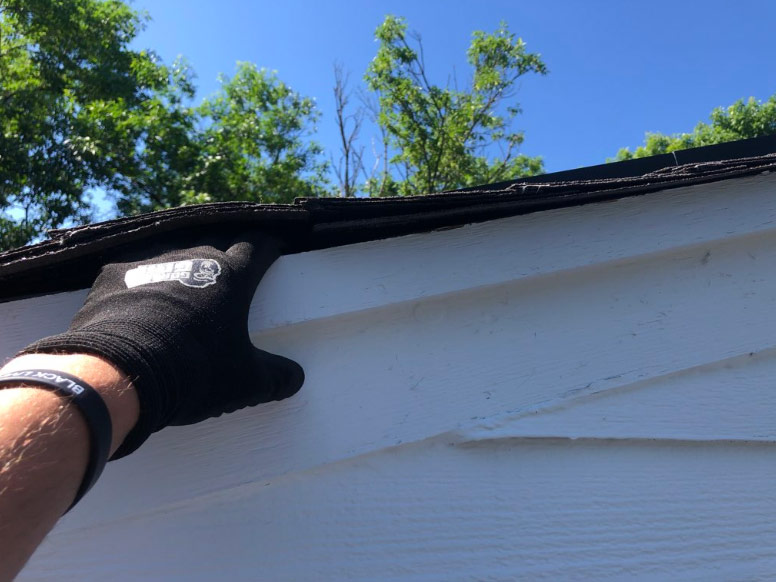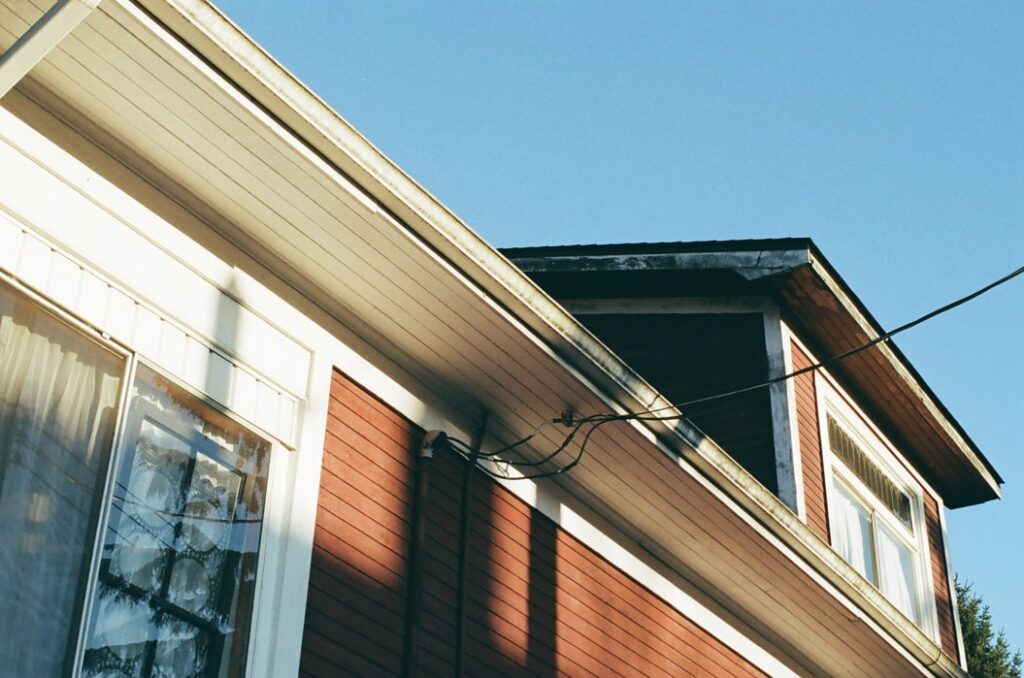Are you noticing damage along your gutterline? It might not be what you think it is…
It might make sense to assume that your home’s gutterline is deteriorating quickly if you’re noticing damage, but there could be more to it. It could also be caused by other factors like wildlife attempting to get into your home.
The Gutterline Builder’s Gap
There are a wide variety of places through which wildlife can gain access into a house, but one of the most common areas is at the builder’s gap along the gutterline. This gap is located where the outside of the exterior walls meet the roof. This location is where the gutters are hung from the top wall board, called a fascia board.
You may be thinking since you have a new home, or a recently rebuilt roof, that animals cannot enter your home here, but you could be wrong. Bats, squirrels, mice and raccoons are just a few of the species that frequently find their way into a home through this void.
There are a variety of causes for a builder’s gap. Some of these voids/gaps are in place to ensure proper air movement and water evaporation. The gutterline builder’s gap, however, can result from a couple of different specific causes.

The first possibility is that a gap does not initially exist, but forms over time as the home expands and contracts with Minnesota’s seasonal freeze/thaw cycles. Poorly installed roofing materials is the second cause, and the main culprit is the plywood decking underneath your shingles not being flush with the walls.
Any gap found in this gutterline area becomes a weak spot in the construction of the home which can allow heat to escape, water to enter and ice dams to form while simultaneously presenting an ideal point of entry for bats, chewing wildlife and various flying insects.
Wildlife Also Like Warm Shelters
The warm air that escapes through these voids is very alluring to wildlife, especially during the colder months of the year. Wildlife are often seeking warmth and shelter, and they can easily exploit this gap to find what they’re looking for. If the void is not large enough for the wildlife to enter through, it may seek to expand the gap through chewing or scratching around it’s edges and the surrounding materials. This damage has the potential to exponentially increase the total cost to homeowners.
Wildlife Damage To Your Home
 A small gap can become an entry point for various wild animals which can lead to water damage, much higher energy bills and additional structural damage to your home exterior and attic area. The opening size needed to gain access to a structure varies from species to species, but they’re not as large as you may think. Understanding this is the key to helping identify your intruder and knowing how to prevent them.
A small gap can become an entry point for various wild animals which can lead to water damage, much higher energy bills and additional structural damage to your home exterior and attic area. The opening size needed to gain access to a structure varies from species to species, but they’re not as large as you may think. Understanding this is the key to helping identify your intruder and knowing how to prevent them.
Mice and bats can both enter through a dime-sized or larger hole, while smaller squirrel species only need roughly a golf ball sized hole. Larger wildlife, such as grey squirrels and raccoons, create larger holes the size of a grapefruit up to the size of a volleyball. Locating the entry point is the first and most important step in preventing further damage.
Once wildlife have found their way inside your attic, the insulation can quickly become compacted and soiled, triggering costly disinfection and decontamination needs. At this point, the nuisance wildlife may progress further into the home’s attic and/or walls, even entering the living space in some instances. Clearly, the situation can spiral further out of control if it remains unaddressed.
Removing The Offending Wildlife
When a void is located at the gutterline builder’s gap, our wildlife technicians recommend first removing the offending wildlife with a trapping program or a one-way door monitored with indicators. Once all the animals have been successfully evicted, wildlife exclusion measures (wildlife-proofing/sealing of the home) can be employed to prevent future re-entry.
Sealing The Gutterline Builder’s Gap
Installing wildlife exclusion measures to the gutterline builder’s gap is accomplished by using a custom fabricated drip edge or gutter apron. Our experienced wildlife technicians utilize exterior grade 26-gauge metal, selecting the closest color match available. This metal is custom-measured, cut and bent to cover the entry points identified during the home inspection. The pieces are then attached with exterior grade roofing screws to ensure longevity and bonding. These materials are exceptionally durable, unlike traditional spray foam, and provide lasting protection that withstands future reentry attempts.
Gutterline builder’s gaps can end up causing a lot of damage to your home. From small insects to large raccoons, this area of your home is susceptible to entry from various wildlife. If you want to prevent this kind of damage to your home, it’s important to contact a professional wildlife exclusion company to perform this service. With years of experience, they know exactly what to look for and the best installation methods.
If you are looking for a high-quality wildlife exclusion service in the greater Twin Cities, MN area, contact the wildlife control professionals at Abra Kadabra Environmental Services today!

